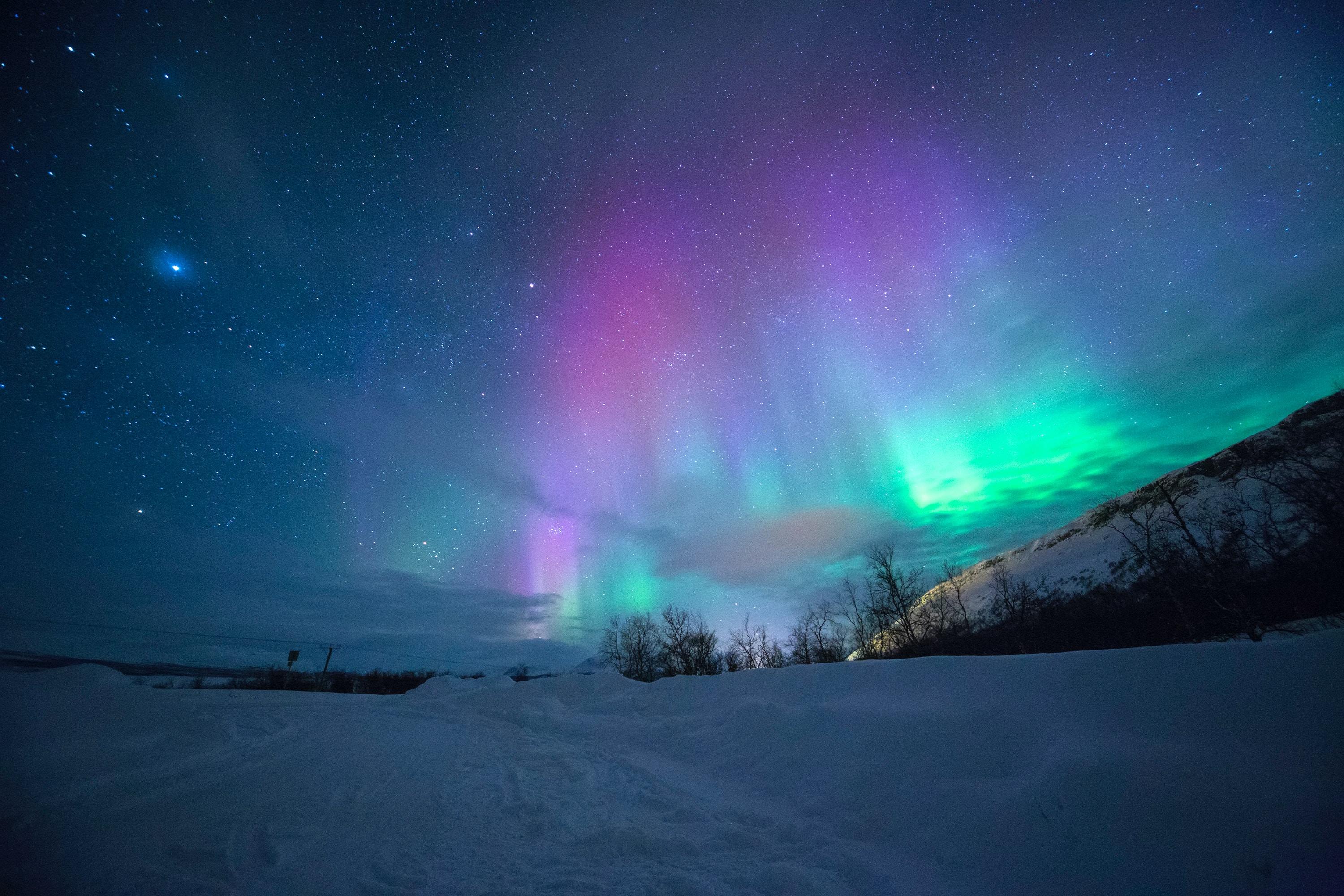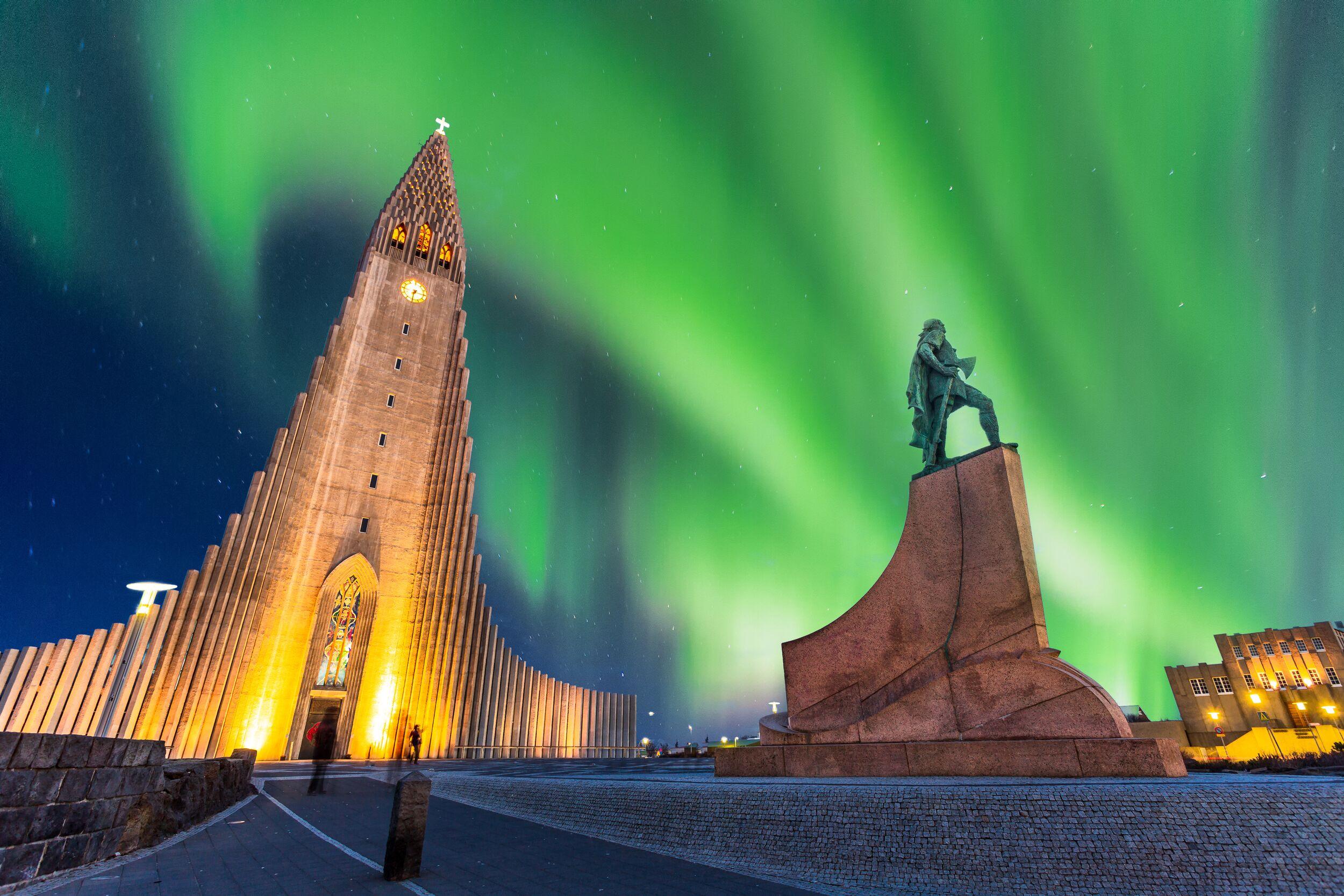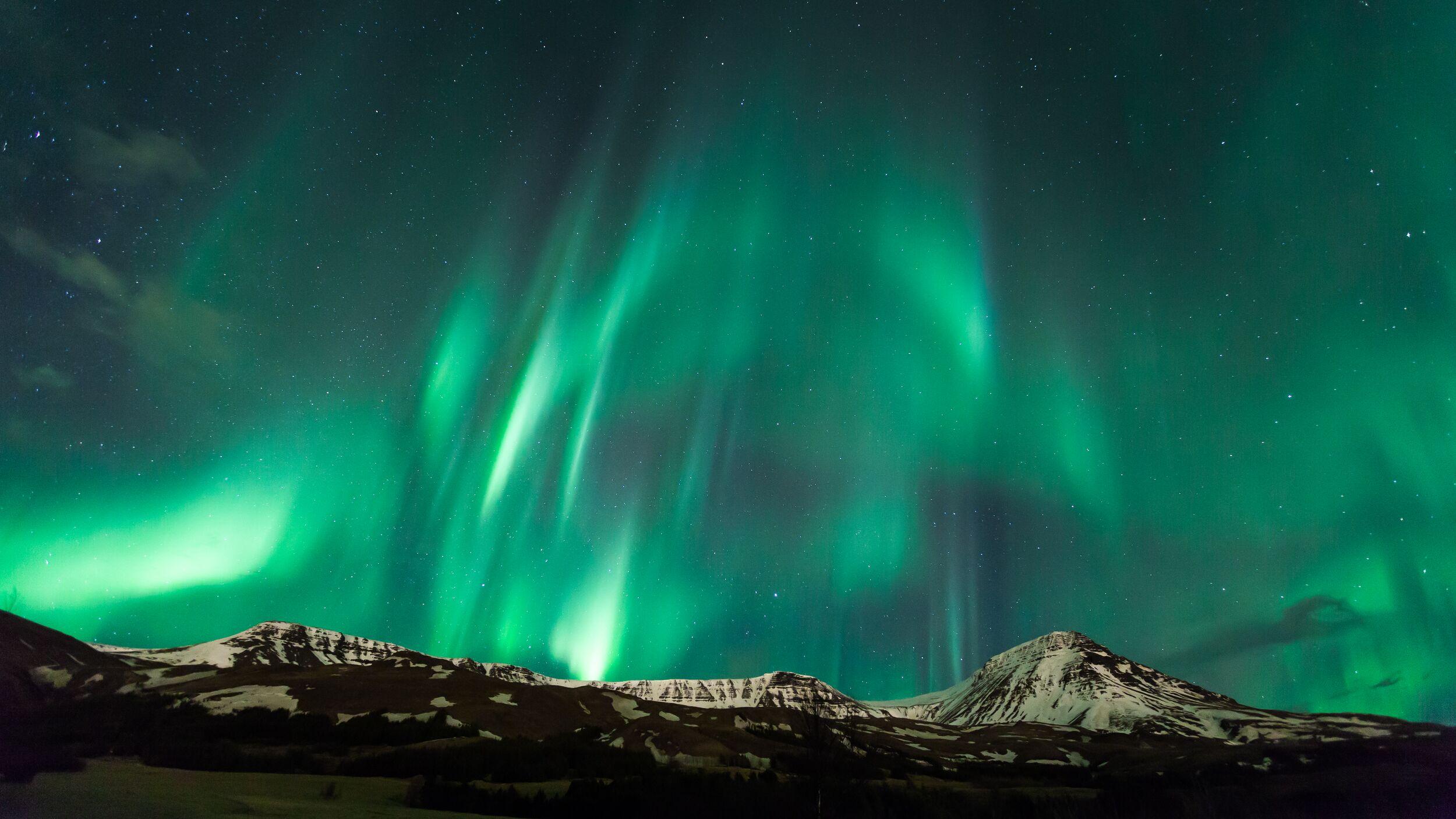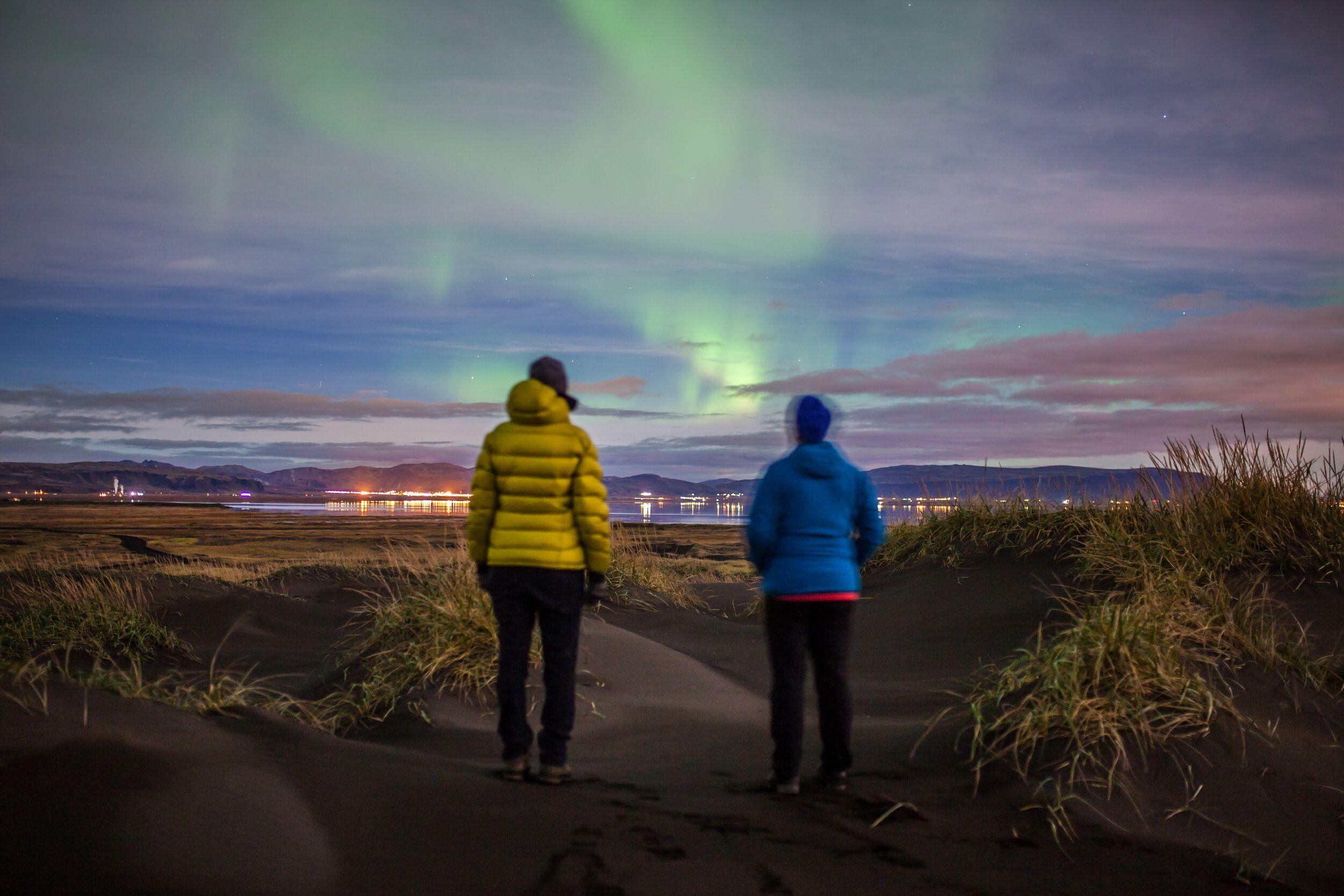
Recognized as a bucket-list phenomenon, many people from around the globe travel to Iceland solely for the chance to witness this celestial dance. The allure of the auroras transcends borders and cultures, drawing enthusiasts, photographers, and dreamers, all eager to experience the mesmerizing beauty of these shimmering lights.
Understanding the Phenomenon
Beneath this celestial dance lies a fascinating scientific phenomenon. Let's unravel the mysteries of the Northern Lights, exploring their origin, the role of the sun's activity, and the myriad colors and shapes they manifest in.
The Northern Lights are the result of charged particles colliding in Earth's atmosphere. These charged particles, primarily electrons and protons, originate from the sun and are drawn towards the Earth's poles by its magnetic field. When these charged particles interact with the gases in our atmosphere, they create the vivid lights we recognize as the auroras.
The Sun's Role
The sun, our life-giving star, is the primary catalyst for the Northern Lights. It continuously emits a stream of charged particles called the solar wind. When there are disturbances on the sun's surface, such as solar flares or coronal mass ejections (CMEs), the solar wind intensifies, sending a greater number of charged particles toward Earth.
When these particles reach Earth's magnetic field, they spiral along the magnetic field lines towards the polar regions. It's here, in the ionosphere, that they collide with atmospheric gases, producing the light emissions we see as the Northern Lights.
Colours of the Aurora
The distinct colors of the auroras are determined by the type of gas and the altitude at which the collision occurs:
- Green: The most common color, green, is produced by oxygen molecules located about 60 miles above the Earth.
- Red: At even higher altitudes, approaching 200 miles or more, oxygen can produce deep red hues.
- Blue: Nitrogen molecules can produce blue or purplish-red auroras.
- Purple and Pink: A mix of red and blue, these colors typically appear at the lower edges of the auroras or as a separate hue beneath the main green belt.
Shapes and Patterns
The Northern Lights don't just manifest as random splashes of color. Observers often report seeing various shapes and patterns:
- Arcs: The most common form, these are semi-circular streaks of light.
- Coronas: These are starburst shapes that seem to radiate from a central point in the sky.
- Curtains or Draperies: Resembling a folded curtain, these are parallel rays and pleats that cover the sky.
- Rays: These are the individual light streaks that make up many of the shapes listed above.
Optimal Conditions for Witnessing the Northern Lights
The Northern Lights are notoriously elusive. Though they occur throughout the year, seeing them requires a combination of the right geographical location, atmospheric conditions, and solar activity. If you're hoping to catch a glimpse of this majestic light show, understanding the optimal conditions can significantly enhance your chances.
Location, Location, Location
The Aurora Borealis predominantly occurs in a ring around the polar regions, known as the auroral oval. The closer you are to the North Pole, the better your chances:
High-Latitude Regions: Places like Iceland, Norway, Canada, and Alaska are well-situated within or near the auroral oval.
Darkness is Essential
Auroras are best viewed under dark skies:
- Time of Year: Winter months offer longer nights. In places like Iceland, the period from November to February is often touted as the best time because of the extensive darkness, however, dark nights occur between late August and early April, making it possible for us to perceive the Northern Lights.
- Time of Night: Auroras can appear at any time after sunset, but the prime window is generally between 10 pm and 2 am.
- Avoid the Full Moon: Although the Northern Lights can be visible even on nights with a full moon, bright moon can overshadow (or overshine) weaker auroras. For the best experience, aim for nights when the moon is below the horizon or during its crescent phases.
Clear Skies
Cloud cover is the nemesis of aurora seekers. Without clear skies, even the most brilliant displays remain hidden:
- Weather Forecast: Always check local forecasts and seek out areas predicted to have minimal cloud cover.
- Escape City Lights: Light pollution can significantly diminish the visibility of the Northern Lights. Head to remote areas away from city lights.
Heightened Solar Activity
Strong solar activity can lead to more vibrant and widespread auroral displays.
- Solar Flares & CMEs: These solar events can amplify the intensity of the Northern Lights.
- Solar Wind:A strong solar wind can push the auroral oval further south, allowing more regions to witness the lights.
Elevated Points
While not a strict requirement, being on higher ground can sometimes offer a more unobstructed view, especially in places where trees, buildings or other terrain features might obstruct the horizon.
Duration & Patience
Sometimes, the Northern Lights can be a fleeting event, only lasting a few minutes. Other times, they might dance for hours. Patience is crucial. It's not uncommon for avid watchers to spend several nights waiting for a glimpse.
In conclusion, while the Northern Lights are a natural phenomenon and can never be guaranteed, understanding and seeking out these optimal conditions can greatly enhance your chances of witnessing nature's grandest light show.
Guided Northern Lights Tours in Iceland
To increase the likelihood of witnessing this mesmerizing display, many opt for guided tours, led by experts who know the terrain and the phenomenon itself.
Local guides offer an advantage with their deep knowledge of ideal viewpoints away from city lights and expertise in reading the forecasts and navigating winter roads. Moreover, they enrich the experience by sharing the science and folklore associated with the auroras.
There's a variety of tours to choose from. Bus tours cater to larger groups, Superjeep tours provide an off-road adventure to remote spots, boat tours present a unique view from the sea, and combo tours mix aurora hunting with other Icelandic attractions.
A significant benefit of these professional tours is their adaptability to the day's cloud cover and Aurora forecasts. If conditions aren't right, many offer rebookings or refunds.
For a more tailored experience, travelers can opt for private tours or even multi-day excursions that dive deep into Iceland's landscapes, increasing the chance to witness the Northern Lights multiple times.
In essence, while Iceland offers myriad experiences, a guided Northern Lights tour, with its blend of expertise and comfort, can make the aurora viewing truly unforgettable.
The ethereal dance of the Northern Lights, shimmering across the Icelandic skies, is a testament to nature's wondrous artistry. As the colors weave their tale of solar interactions and atmospheric ballet, onlookers are reminded of the beauty that exists beyond our earthly realm.
Whether you venture out independently or rely on the expertise of local guides, beholding the Aurora Borealis in Iceland is an experience that lingers in the soul, a vivid memory of the universe's magnificent splendor. We sincerely hope that you, dear reader, will be fortunate enough to witness and cherish this celestial wonder firsthand.
FAQ
Almost any camera phone these days is powerful enough to take decent pictures of the Northern Lights. In fact, many phone cameras are actually better than proper cameras!
To take a good photo, turn your exposure to the maximum, turn off the flash, and use night mode. Apps such as Nightcap, Cortex Camera, or the Northern Lights Photo Taker can help too.
The rarest colours of the Northern Lights are blue and red. Blue auroras are produced by nitrogen molecules at lower altitudes and are less common. Red auroras, occurring at the highest altitudes and caused by high-altitude oxygen, are also relatively rare. Both these colours require specific atmospheric conditions to be visible, making them a less frequent but spectacular sight in auroral displays.
The Northern Lights can be seen from Reykjavík, yes. And it’s a magical experience to see them by chance when you’re just enjoying your evening.
However, the city is not the best place to see the Northern Lights. That’s because light pollution can prevent them from appearing with their full strength. Instead, you want somewhere dark to enjoy them at their best.
The Northern Lights are special for a couple of key reasons:
1. Unique Natural Phenomenon: They represent a spectacular natural light display in the Earth's sky, primarily seen in high-latitude regions around the Arctic and Antarctic. This phenomenon results from the interaction between the Earth's magnetic field and charged particles from the sun, making it a unique celestial event.
2. Cultural and Mythological Significance: Throughout history, the Northern Lights have held significant cultural and mythological importance in various societies. They have inspired numerous folklore tales and art and have been a subject of awe and wonder. Their ethereal beauty and the magical experience they provide add to their special status in human perception and experience.
It’s possible to see the Northern Lights in Iceland throughout the winter.
For the Northern Lights to be visible, you need two things: solar activity and a clear, dark sky. The darker the better—that’s why winters in very northern countries like Iceland are the best time to see them.
The darkest months of the year are November, December, and January. However, you can see Northern Lights from the middle of August through to April and studies show that the closer you are to the equinoxes, the higher the likelihood of seeing the Northern Lights. Based on that you'd want to place your bet on September/October and March/April.
The scientific processes that cause the Northern Lights occur very often, if not pretty much all the time—throughout the night, day, winter and summer. However, often you can’t see them because of the cloud, the midnight sun, or because you’re not looking.
While every night might be an exaggeration, the Northern Lights are much more common than you might think!
Auroras can last from a few minutes to several hours, depending on the intensity of the geomagnetic storm causing them.
To maximize your chances of seeing the Northern Lights, it's advisable to stay for at least a week. This duration allows for variability in weather conditions and solar activity, which are crucial factors in the visibility of the auroras. Since the Northern Lights are a natural phenomenon and their appearance can be unpredictable, a longer stay increases the likelihood of witnessing this spectacular display, especially considering potential cloudy nights or periods of low solar activity.
Facing north often increases your chances of seeing the Northern Lights, especially in lower-latitude areas. In Iceland, however, the lights are most often right above our heads or stretching across the entire sky.
There’s no way of guaranteeing that you’ll see the Northern Lights. It’s a natural phenomenon that’s affected by the weather, after all. But with Northern Lights tours, you do have a pretty good chance.
In Iceland, December is the month when the days are shortest and nights are darkest which typically makes it a favourite month for Northern Lights-hunting. However, studies show that the closer to the equinoxes you are, all the more likely you are to see northern lights in the northern hemisphere. So, some would prefer September and October or March and April over the darkest months, sacrificing a few hours of darkness for a higher likelihood of lights.
That said, you can have as much luck seeing the aurora borealis in any of the months of the winter. All you need is dark, clear skies.
Exciting studies and anecdotal evidence, ranging from Sami folklore to modern stargazers, suggest that the Northern Lights might produce sounds, a phenomenon as elusive as the lights themselves.
Historically, indigenous peoples and early Arctic explorers reported hearing sounds like crackling and whooshing during auroral displays, though these claims were met with scepticism since auroras occur at altitudes beyond the human ear's acoustic range.
Recent research in Finland, however, has recorded sounds such as claps and crackles coinciding with the auroras at lower altitudes within the human audible range. This emerging theory suggests that the electrical phenomena of auroras, involving charged particles and temperature variations, could generate these sounds akin to the noise produced by a spark.
While not all observers experience these sounds, and they're often heard under specific, quiet conditions, for some, the Northern Lights are not just a visual spectacle but a celestial concert, highlighting the dynamic nature of our planet.
Yes, you can see the Northern Lights in Reykjavik in some cases. However, when the lights are faint or low on the horizon, their visibility can be significantly reduced by the city lights and obstructed by buildings. For the best viewing experience, it's recommended to find spots away from the urban light pollution and with an unobstructed view of the sky.
It’s not at all rare to see the Northern Lights in Iceland! That’s why so many people come to the Land of Ice and Fire to enjoy the display.
In fact, you can see the aurora borealis almost every night if the skies are clear. You just need to know where to look!
The best way to increase your chances of seeing the Northern Lights is to join a tour. While you can sometimes see the phenomenon by yourself, when you’re led by an expert guide, they’ll be able to show you exactly where to look.
What’s more, if you don’t see the Northern Lights on your tour, we’ll give you a ticket to another tour on a day that suits you for free—to double your chances.
Three interesting facts about the Northern Lights are:
1. The Northern Lights, also known as Aurora Borealis, are caused by the interaction of solar wind - a stream of charged particles escaping the Sun - with Earth's magnetic field and atmosphere.
2. They can exhibit a variety of colours, with green being the most common. These colours result from different gases in the atmosphere getting excited by the solar particles; oxygen emits green and red hues, while nitrogen gives off blue and purple.
3. Although best known for appearing in polar regions, during periods of strong solar activity, the Northern Lights can be seen at lower latitudes, far from the polar areas. This makes them a spectacular and somewhat unpredictable natural light show.
To see the Northern Lights at their best, it’s recommended that you find a place where light pollution is lowest. That’s why the best Northern Lights tours will leave cities such as Reykjavík—because you can see the aurora better where it’s darkest.
That said, you can see the Northern Lights from the city. And as weather conditions and cloud cover change every night, the best place to see the Northern Lights changes too.
Seeing the Northern Lights in Iceland is fairly likely during the winter months if weather conditions are favourable.
The price of Northern Lights tours in Iceland depend on what you want to get up to and how you want to travel.
The most affordable option is the classic tour from Reykjavík, which takes you by coach to a destination where the conditions are best that evening. But if you want to travel by small group, or on a private vehicle, you will pay more.
The same goes for tours that take you to different destinations, such as the Golden Circle or the Blue Lagoon.
Check out individual tour pages for up to date prices.
The Northern Lights do not occur every night; their visibility depends on solar activity and atmospheric conditions.
The Northern Lights are not exclusively in the north; they are mirrored by the Southern Lights (Aurora Australis) in the southern hemisphere, both occurring near the Earth's magnetic poles.
When on a Northern Lights tour, plan to wear clothes that will best keep you warm. You’re going to be outside at night in the Icelandic winter, and to enjoy the experience to the fullest you won’t want to get cold.
The best idea is to wear lots of thin layers, plus a winter jacket and a windproof outer shell. And don’t forget to keep your feet warm! Icelandic woollen socks, for example, can be a good idea.
The best parts of Iceland for Northern Lights are outside urban areas, with the eastern northern and western regions often recommended for clearer skies.
Articles about the Northern Lights
See all articlesRelated tours
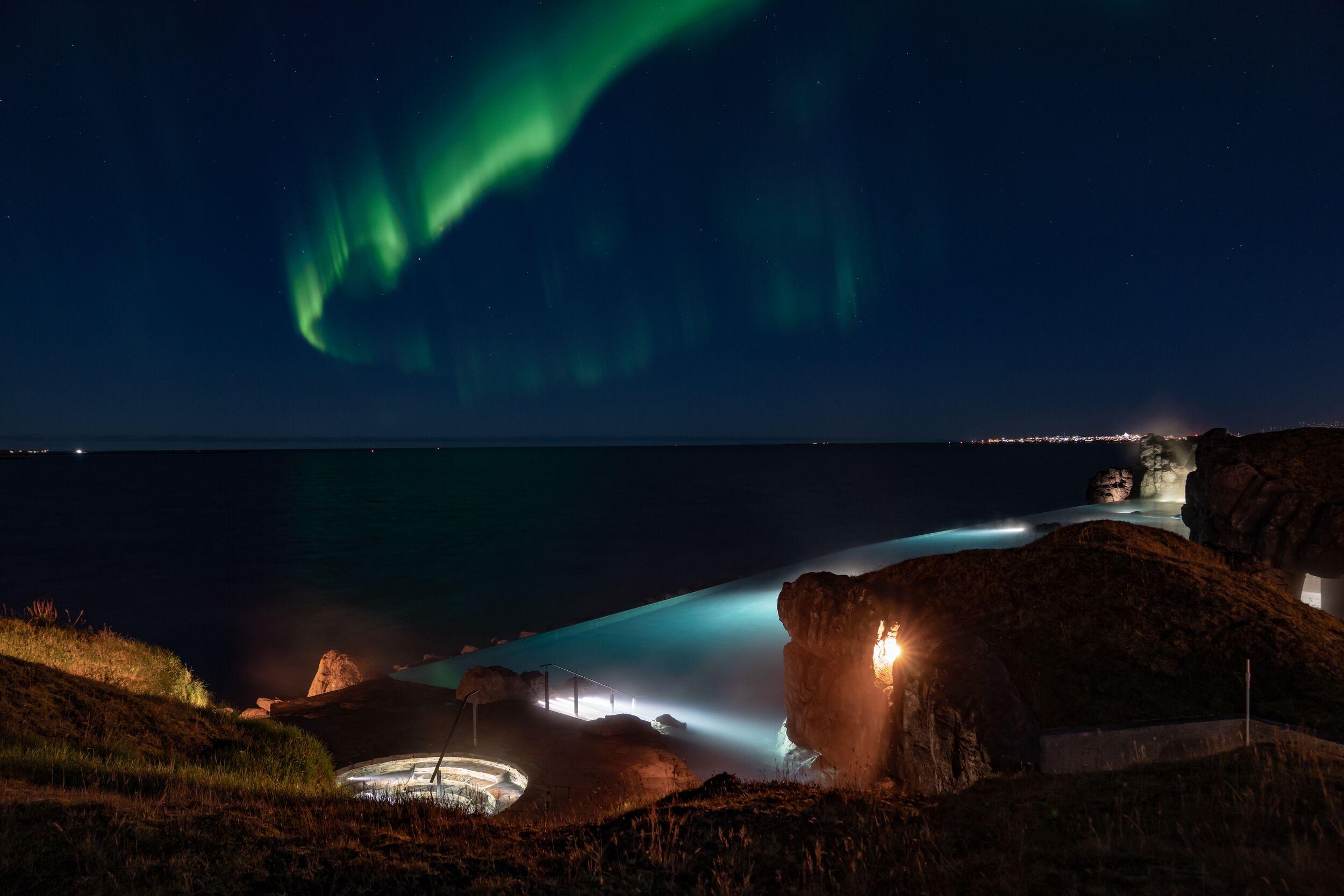
The Sky Lagoon & Northern Lights
Enjoy a relaxing soak in the Sky Lagoon before your adventurous Northern Lights hunt.
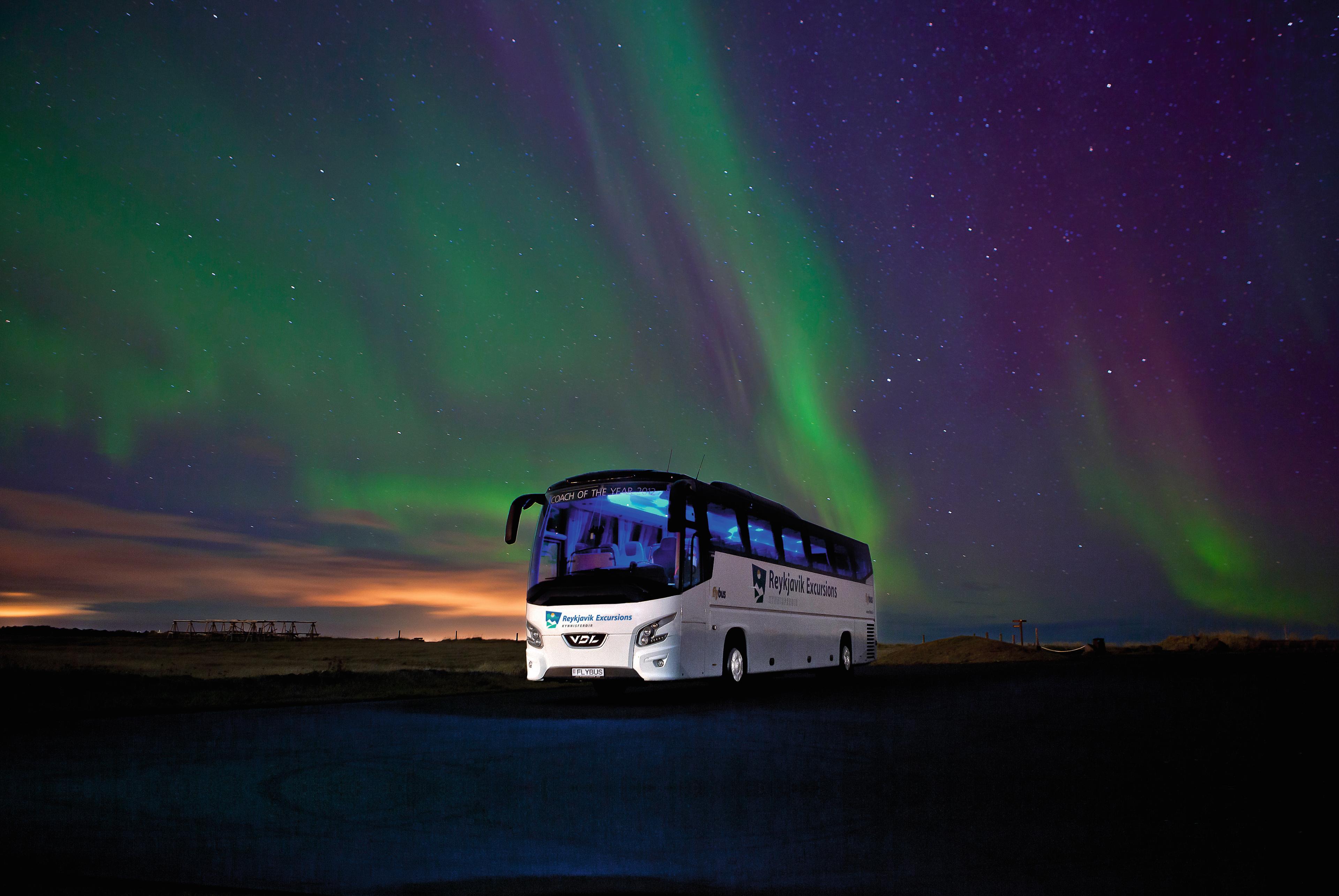
Northern Lights Tour
See the majestic Northern Lights dancing across the sky. If the skies are shy, try again free of charge as many times as you need until you see them! Learn about the phenomenon by visiting the Aurora Centre - Northern Lights Exhibition in Reykjavík; admission is included in this tour!
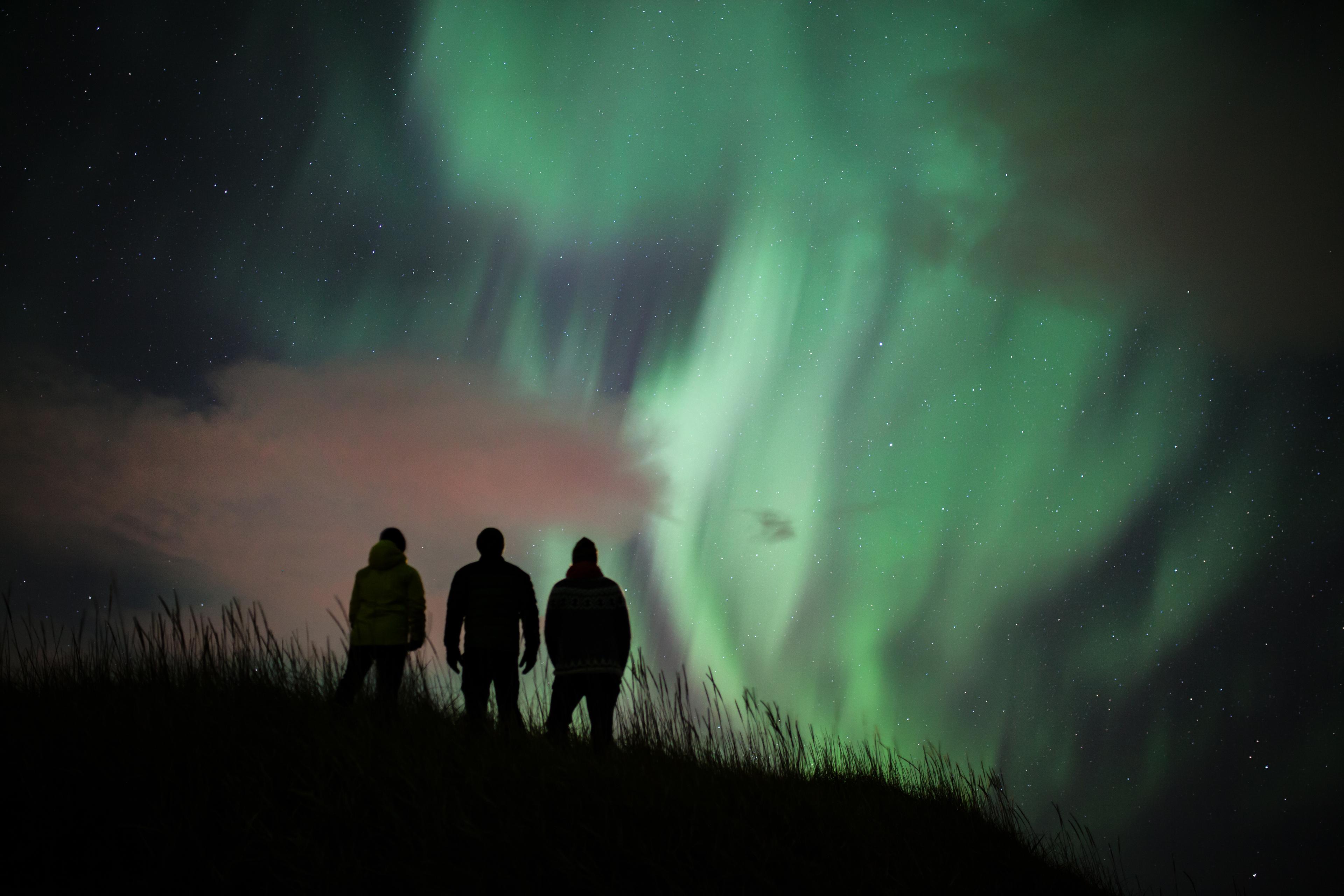
Northern Lights - Small Group Tour
Catch the stunning Northern Lights in the sky, and if they're shy, rebook for free until they show. Included admission to the Aurora Centre's Northern Lights Exhibition on the tour date. The small group size ensures an intimate experience and personalized attention from your expert guide.
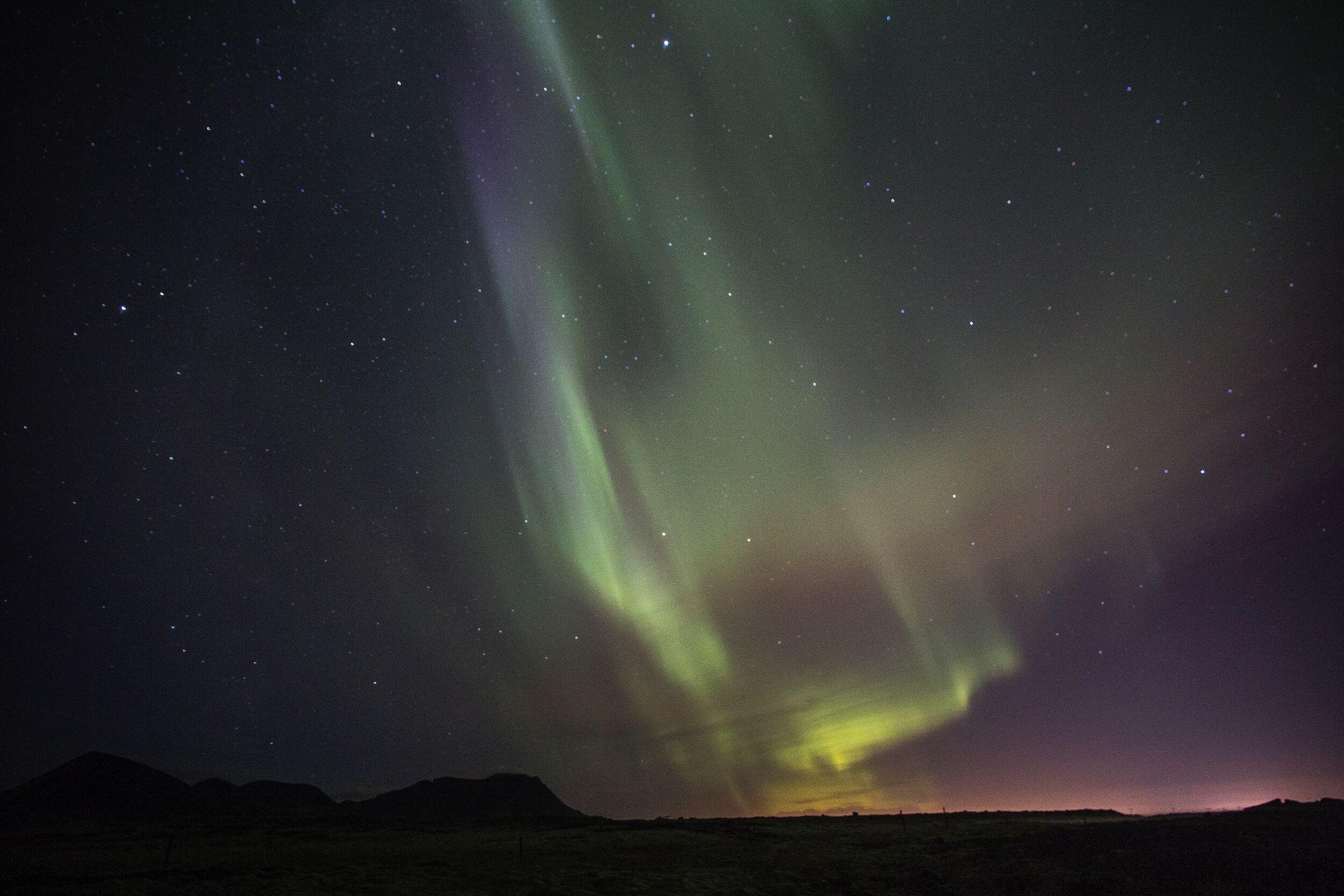
The Golden Circle & Northern Lights - Combo Deal
Want to see the sites of the Golden Circle and hunt for the northern lights but have a limited amount of time? Consider this express Golden Circle/Northern Lights tour! Experience the landmarks of the classic Golden Circle in South Iceland on this unforgettable day tour. The Golden Circle encompasses the must-see sights of Thingvellir National Park, the golden Gullfoss waterfall, and the bubbling geothermal region of Geysir. After your return to Reykjavík, a guide will lead you on a search for the elusive northern lights!


